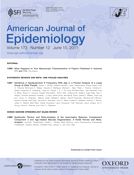The gap of visual impairment between economic groups in Shahroud, Iran: a Blinder-Oaxaca decomposition
Authors
Affiliations
Abstract
The authors assessed the role of economic inequality in visual impairment and decomposed the gap between high and low income groups. Study data were extracted from the first phase of the Shahroud Eye Cohort Study, performed in 2009, with 5,190 participants aged between 40 and 64 years. The participants were divided into low, medium, and high economic groups according to their assets by using a principal component analysis. The gap between low and high economic groups was decomposed to its determinants by using the Blinder-Oaxaca method. The prevalence of visual impairment, a presenting vision worse than 20/40 in the better eye, was 3.57% and 11.07% in the high and low economic groups, respectively. Age and education were the major factors in the decomposition model, contributing to 41.38% of the gap. Insurance status, gender, and education of the head of the household had no effect on this gap. Economic inequality in visual impairment was noteworthy. Although part of the gap between low and high economic groups was explained by differences in age and education, the greater part (58.62%) could be due to differences in health-care access and utilization.
Keywords: Eye cohort, Iran.

